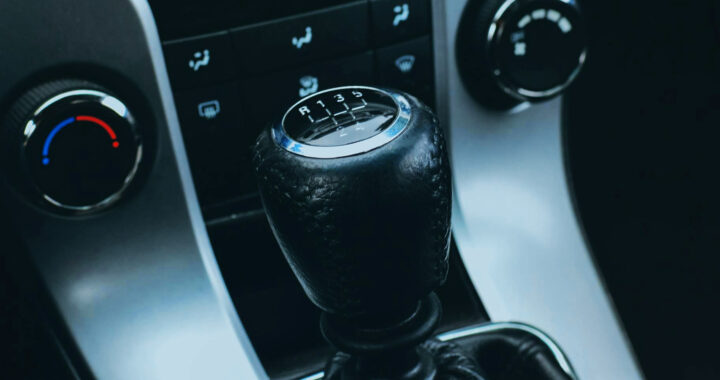A manual transmission is a type of transmission system that is characterized by the use of a clutch for regulating torque transfer from the engine to the transmission, and a gearstick to manually select gears. It is also known as a manual gearbox, standard transmission, or a stick shift. This transmission system is still offered by most automakers despite the availability of modern or more advanced transmission technologies like automatic transmission or AT and continuously variable transmission or CVT. Nevertheless, like its counterparts, a manual transmission system has its fair share of advantages and disadvantages.
Benefits: Advantages of Manual Transmission
1. Better Engine Control
One of the main advantages of vehicles equipped with manual transmission over counterparts equipped with automatic transmission systems is that they provide drivers a considerable degree of control over how hard the engine works and how much power is driven to the wheels due to direct gear selection and torque transfer regulation.
Most sports cars are equipped with manual transmission systems due to better engine control. This translates to direct driver involvement. Both off-road vehicles like sports utility vehicles and heavy-duty vehicles like cargo trucks and earthmovers are equipped with MT for direct gear selection and more durability in rugged driving conditions.
2. Durability and Low Maintenance
A manual transmission system has a longer lifespan than automatic transmission systems. It is more durable and has lower maintenance requirements. This comes from its simpler mechanical specifications, fewer mechanical parts, and clearer operational principles. There are no complex torque converters, hydraulic systems, and electronic control modules.
The clutch and gears experience less repetitive engagement and disengagement compared to the constantly shifting gears in an automatic transmission. It is also more compact. Furthermore, although a CVT has a more simpler and compact design, it is still more resilient to wear and tear, has lesser maintenance requirements, and is easier to repair.
3. More Cost-Effective
The price of automotive vehicles equipped with manual transmissions tends to be more affordable than automatic transmission systems like traditional AT and CVT. The price difference can range from between USD 3000 and USD 6000. This makes them ideal for budget-constrained users or those who are building a fleet of vehicles for business purposes.
The longer lifespan, lower maintenance frequency, and easier reparability also translate to lower maintenance and repair costs. Fluid changes are less frequent. The absence of complex hydraulic systems and electronic control modules means fewer potential points of failure. The break life is also longer because it is more effective in slowing down the engine.
4. Push Starting
Push starting or clutch starting is another advantage of manual transmission. It involves starting a vehicle by selecting the second gear before switching the ignition, depressing the clutch, pushing the vehicle, and quickly releasing the clutch. This is done when other starting methods are unavailable due to low battery power or other hardware failures.
Most vehicles equipped with automatic transmission systems with torque converters and modern safety systems, except those with front and rear hydraulic pumps, are difficult to push start because gear transmission selection is only doable when the actual gearbox is operational. Push starting is an easier way of troubleshooting a vehicle.
Drawbacks: Disadvantages of Manual Transmission
1. Complexity of Use
Drivers used to AT might find manual transmission complex and intimidating. There is a relative learning curve attached to driving vehicles with manual gearboxes because they involve the operation of an extra clutch pedal while keeping the correct gear selection at all times. This requires more coordination and concentration than AT systems.
Furthermore, in heavy traffic and long drives, a driver needs to operate the clutch pedal more frequently and remove one hand from the wheel periodically while the vehicle is in motion to continuously select the correct gear. Driving up or down the hill is more difficult. MT can cause more fatigue and can be difficult to use for people with disabilities.
2. Slower Shifting Speed
Another notable drawback of vehicles equipped with a manual transmission system is their slower shifting speed compared to counterparts based on traditional automatic transmission or continuously variable transmission. This stems from the time required for a driver to operate the clutch pedal and move the gearstick to choose the appropriate gear.
Remember that traditional AT and CVT variants automatically shift the gear without the need for additional input or involvement from the driver. The vehicle does the selection of the gear in an automatic transmission. Of course, experienced MT drivers, including racing drivers, have a higher degree of shifting response times than average AT and CVT drivers.
3. Reduced Efficiency
The frequent use of the clutch and gear changes in a manual transmission can reduce fuel efficiency compared to an automatic transmission in frequent stop-and-go traffic or urban environments. Frequent gear changes disrupt the optimal operating range of an engine. There are also more power transfer points between the engine and the wheels.
Fuel use is also dependent on the skills and driving styles of drivers. Inexperienced or inefficient gear shifting and clutch control can lead to more power losses compared to an automatic transmission. Holding the clutch too long also consumes more fuel and results in wastage. Automatic transmissions are programmed for optimal efficiency.
4. Mechanical Deterioration
It is still important to underscore the fact that manual transmission still requires upkeep and is vulnerable to mechanical failures due to improper use despite its longer lifespan, simpler design and operational principle, and lower maintenance requirement. Inappropriate selection of gear can lead to mechanical damage. Push starting can stress the clutch.
The clutch is also susceptible to wear and tear. Driving in the gear or moving the vehicle from a standstill causes a considerable amount of mechanical stress due to friction. The friction worsens when from a standstill upward on a hill due to the need to overcome the force of gravity. The metal components can also degrade due to material deterioration.
